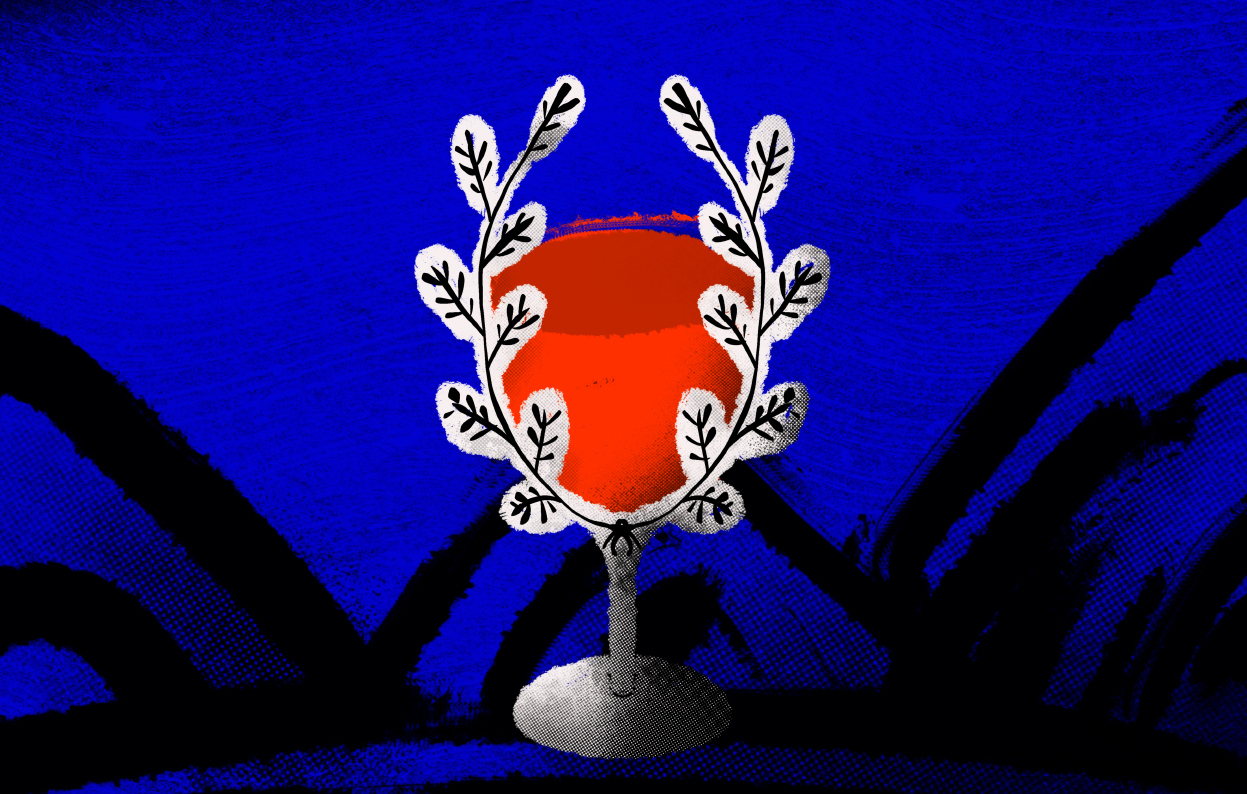
Working in one of the most challenging vineyards in Europe, the wine growers of Aigialeia cultivate their ‘extreme’ vines with the devotion of hermits. One could say they are idealists, determined not to abandon their vineyards, despite the obvious difficulties and high cost. They are modern ‘heroes’ of viticulture. When, however, they reach their remote vineyards and labour on the sheer slopes and lofty terraces of Aigialeia, they delight in the view beyond the mountains, where the sky meets the sea. They feel the same magic when they savour a glass of the enchanting wine of this barren land, the fruit not only of their care and attention but also of the wise processes of nature.
Mountainous viticulture in adverse conditions can indeed be an act of ‘heroism’. The term was chosen by the Italian founders of Cervim, the Centre for the Research and Protection of Mountainous Vineyards, to promote the mere 7% of European vineyards found at high altitudes with steep inclines. It is a viticulture that requires arduous work in the service of a broader vision to preserve a unique cultural heritage.
The Rouvalis winery, the first and so far only member of Cervim in Greece, justly wears this badge of honour. The wines produced by Theodora Rouvalis and Antonio Ruiz Pañego, as well as by the other ‘heroic’ winemakers of the world, the so-called ‘extreme’ wines, make up a profoundly authentic, true creation. They contain the daring, the anticipation and the hard work of their creators and promise great delights to every wine lover.
Heroism in practice
Let’s close our eyes and put ourselves in the wine growers’ boots. What does their work consist of? What is it like to look after these vines and make wine from their grapes?
Remote, inaccessible vines
The Rouvalis Winery collects its grapes from five main regions: Trapeza, Mamousia, Pyrgaki, Paraskevi and Ano Zireia. These vineyards are all situated on plateaus and mountain slopes, but are not interconnected. The nearest vineyard, in Pyrgaki, is a difficult twenty-minute drive from the Winery. You pass the remaining vineyards as you climb up the steepest imaginable incline along winding routes that are up to twenty-five kilometres long. It takes growers from forty minutes to over an hour to reach their vineyards. And they have to do this day in day out, whenever required. In exchange, they know they are preserving one of the most thrilling vineyards in Europe, over and above the cost in terms of money, time and labour.
Steep slopes
The average gradient in the region of Aigialeia is over 30% while there are slopes with an incline of 50%, which makes terracing necessary. The difficulties of accessing and cultivating these slopes are compensated for by significant benefits: good soil retention and draining, harmonious exposure to the sun, natural recycling of the air, and an exceptional environment for producing healthy grapes.
Altitude
Just 15% of the vineyards are located at an altitude of between 500 and 840m. The vast majority, 85% of the vineyards, are found at altitude of 840m or higher. The combination of altitude, north winds and the protection provided by the mountainous outcrops which impede the warm south winds gives the grapes finesse, freshness and lively bouquets and wines that retain alcohol and have significant potential for ageing.
Without the help of machines
The vast majority of vineyards cannot be reached by tractor, which means that tilling is done manually with hoes. All the work in the vineyard–pruning, training the vines and, of course, picking the grapes–is done by hand. The grapes are collected in small crates, which are carried one by one to the nearest patch of flat ground to be loaded on to small farm vehicles. These small vehicles can carry up to 40 20-kilo crates, which is to say only 800 kilos per vehicle. In some cases, when this is the only means of transportation that can reach the vineyards, the crates are loaded onto small caterpillar track vehicles.
These 40 or so hectares of vines, densely or very densely planted, with small yields of 45 hectolitres per hectare (500 bottles per 1,000 sq.m.), require dedication from everyone involved in the production chain: the growers, the winery team and the sales people all play their part, as do all the friends of Rouvalis wines, to ensure that Heroic Viticulture can become a reality and bring the magic of the terroir of the Aigialeia Slopes to your glass.
It’s midday. The wine growers are resting for a while outside Lefko Lino, the small shed where the tools are kept. Mikros Vorias (Northerly Breeze) that blows through the Syracho, the place where two mountain slopes intersect, cools their sweat. A little bread, some cheese and juicy fruit, which they cut amidst the thorns of the Frangosykia (Prickly Pear), are enough to set them up for the afternoon. The powerful Greek sun drenches the vine still more, its brightness reflected on an Asprolithi (White Pebble). The workers continue to harvest grapes. The Roditis, Assyrtiko, Tsigello and all the other varieties await their turn, eager to continue on their thrilling journey.
Five white wines, two rosés and two reds. With their inspired names bestowed on them by their natural environment, Rouvalis wines are all natives of this, their land.